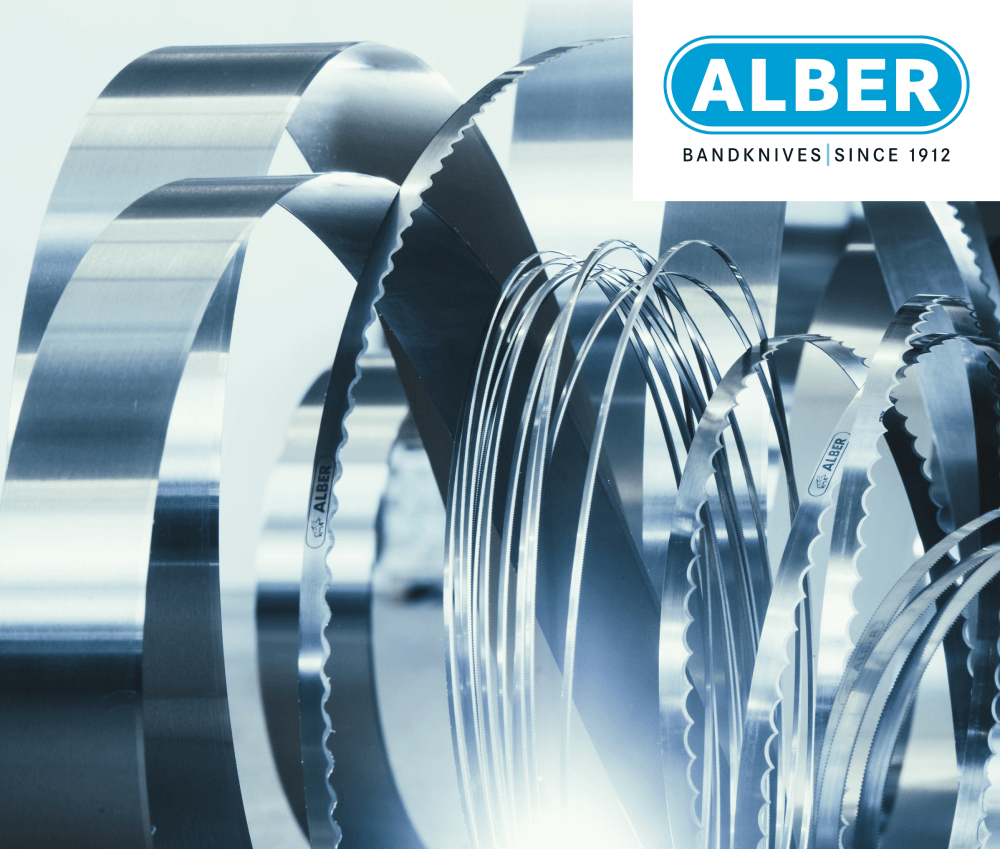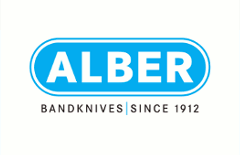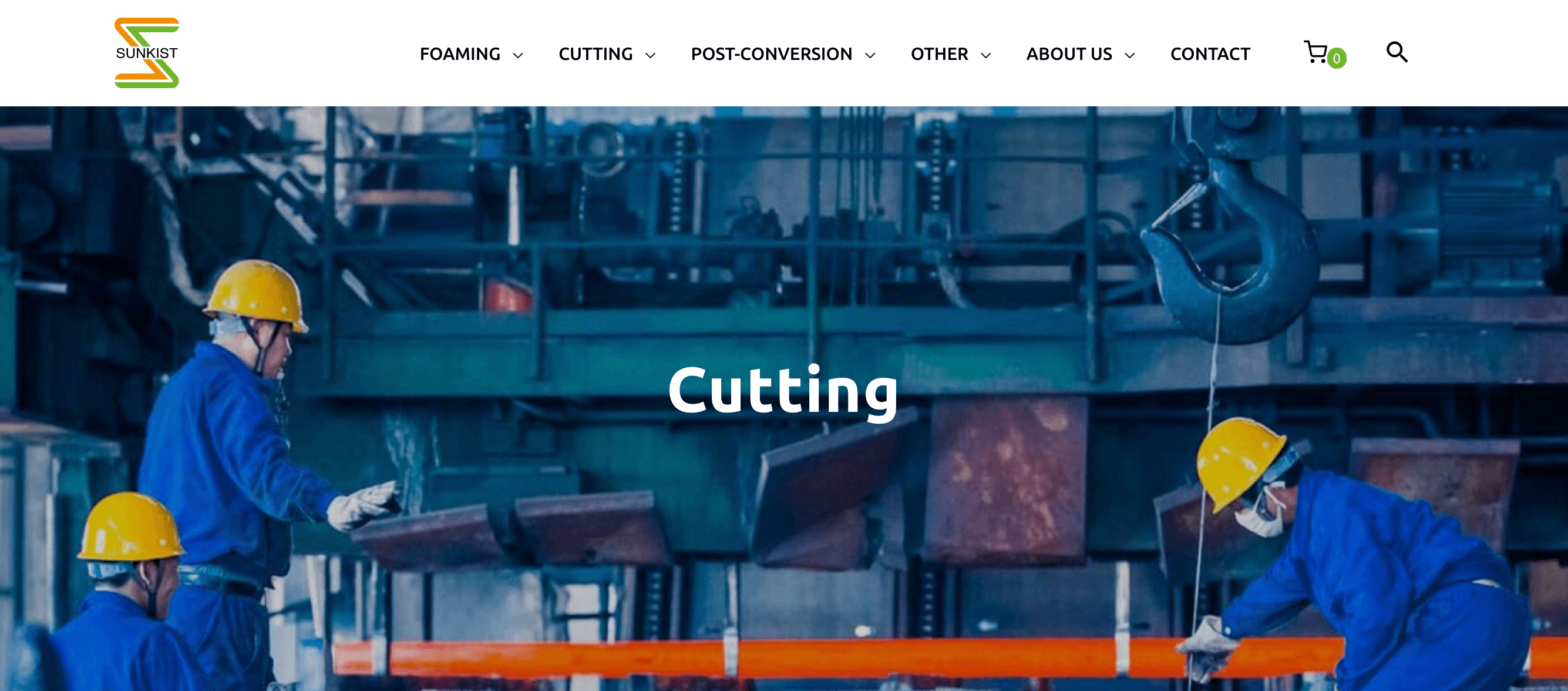Cutting polyurethane foam is a topic we’ve discussed before, and conversion—the process of cutting foam into shapes—is an integral sector of the polyurethane foaming industry. We know this because cutting machines often make up over 75% of Sunkist’s yearly sales. Many of our most loyal customers started as simple conversion plants with just two or three types of cutting machines.
Because they are so commonplace, cutting machines are often overlooked. They do not require the chemical expertise of continuous foaming, but they are still a school of knowledge unto themselves.
That’s why Sunkist has decided to collaborate with Alber Bandknives Germany. We’re bringing you expert knowledge about cutting polyurethane foam from both the machinery end and the blade end. Together, we will answer every question you might have about bandknives and foam cutting. Want all upcoming articles delivered right to your inbox? Subscribe to our mailing list now!

Cutting Machines 101
Here at Sunkist, we have nine different types of foam cutting machines:
- Vertical Cutting
- Horizontal Cutting
- Long Splitting
- Block Cutting
- Trimming
- Convoluting
- Peeling
- CNC Cutting
- Hydraulic Press
The two most common types are the vertical and horizontal cutting machines. Their names refer to the orientation of the blades, so vertical cutters have blades that stretch from floor to ceiling while horizontal cutters have blades that stretch from left to right. These cutting machines need to be the most versatile in terms of what they cut because they take care of everything from flexible to rigid to viscoelastic foam.
Long splitting refers to producing a long and relatively thin cut of foam, most often stored and sold in roll form. The thinner your foam product is, the more precise the cutting mechanism has to be so that there is no bunching, tears, or uneven thicknesses.
Block cutters are used to chop slabstock into blocks. Their blades can be either horizontal or vertical, and the machines themselves are often installed on a conveyor line for continuous material flow. We prioritize hardiness here because with foam blocks in motion, we want to avoid bandknife breakage during a cutting job as much as possible.
Trimming can be done on any vertical or horizontal cutting machine, but that’s often too labor-intensive to be cost-effective. Trimming stations are often added onto slabstock lines to further automate and speed foam conversion.
Convolutors, or foam profile cutters, make up a huge percentage of Sunkist’s production. A sheet of foam is pressed between two patterned rollers while a bandknife cuts through the center of the foam, splitting it into two sheets with interlocking topographies.
Peeling also produces long thin sheets of foam sold in rolls. Unlike long splitting, however, peeling takes the external layer continuously off a foam cylinder (much like peeling the skin off a carrot or potato). Long splitting, on the other hand, slices the top layer off of long rectangular foam blocks.
CNC cutting makes curved and highly detailed cuts possible by preprogramming the bandknife to run along a computer-drawn path. Bandknives for CNC need to be precise and slim in profile in order to execute tight turns. They also want to minimize sawdust and the amount of material destroyed.
And finally, the hydraulic press. This is the only Sunkist cutting machine that doesn’t use a knife to cut. Instead, it punches out foam shapes with a metal mold.
Bandknives 101
written in collaboration with Georg Hank from Alber
Cutting with knives makes up a large part of our daily life, and everybody knows kitchen knives, razor blades, and wood saws. Throughout history, swords with legendary properties have become famous in many places.
Here we talk about industrial knives.
The criteria that determine the selection of a cutting machine also applies to the correct selection of a knife. Precision, efficient cutting, and durability are the key factors. Bandknives used on foam and rubber cutting machines are made of carbon spring steel. They are optimized in structure, hardness, and steel type to maximize cutting ability and edge robustness. Furthermore the steel has to be sharpenable, weldable, and shock-resistant.
The cutting machine determines blade dimensions (length, width, and thickness).
In general there are the following categories for bandknives:
1. CNC contour bandknives:
As contour cutting does 3-dimensional tight and precise shapes, contour bandknives are narrow (3.0-4.5mm in width) to allow for easy rotation. There are both toothed and untoothed types with different tooth shapes to be determined by the materials.
2. Horizontal wide bandknives
Horizontal cutting machines like loopers, splitters, peelers, convoluters, and carousels/loopers use bandknives that are 30-100mm wide. In most cases bandknives run between tight blade guidings. The thickness tolerance of the blade should be below 0.04mm to guarantee precise cutting.
3. Vertical bandknives and bandsaws
Vertical cutting machines with blades 6-35mm wide come in smooth-edge (untoothed) or toothed varieties in various shapes. Single or double-edge versions for one- or two-directional cutting, twisted welding, tooth setting, and tooth hardening are all available options to be discussed in an upcoming article.
Company Alber in Germany concentrates the knowledge of more than 100 years experience in knife and saw production.


Excited to learn more about PU foam machinery and bandknives? Subscribe to the Sunkist mailing list today! It only takes 1 minute for a whole bunch of informative content and zero spam.

